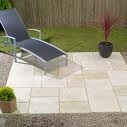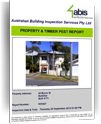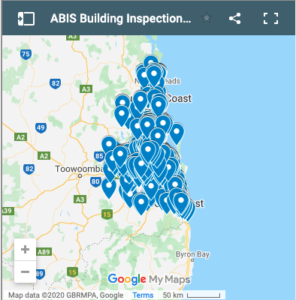Types of Pavers:
Concrete Pavers
These are not to be confused with stencil concrete, concrete pavers are pavers cut from concrete. Stained or broken pavers are easily replaced. Dark coloured pavers hide stains. Ants and weeds in joints are prevented with sealers or herbicides. However, they are prone to cracking and not porous so stormwater run-off will occur.
Cobblestone
These are longlasting. However, wide joints may encourage weeds and ants. Their rough surface makes walking and driving difficult.
Stencil Concrete
The shape, colour and texture of a particular paver is achieved by placing a stencil on wet concrete and then applying a paint-like substance on top. These are cheaper than traditional pavers. However they are prone to cracking and difficult to match original colour or pattern in areas requiring repair. Repairs can also leave an unattractive patch.
Clay Pavers
These can be re-used and they are low maintenance. Clay absorbs water when it rains, decreasing stormwater run-off. However, irregularities in surface make them prone to damage such as edge chipping and weeds tend to appear through cracks.
Natural Stone
This is longlasting, versatile and aesthetically pleasing but expensive.
For an area to be successfully paved, the base or foundation preparation is very important. The following is recommended:
Pedestrian Traffic Only:
Compact crushed rock (road base) 75mm thick mixed with cement
Reinforced concrete 75mm thick (Recommended)
Vehicle Traffic:
Reinforced concrete base 75mm thick minimum 20-25mpa
Good surface drainage is also essential and a minimum fall 1:60 should be provided. In preparing the site, paving must slope away from the building to further allow for run off.
Prepared ground must be even and parallel to finished paver surface level. An uneven base will give an uneven paver surface. Crusher dust and mixing sand with cement are not recommended as a bedding base. Pavers should be flush with the lawn and be laid on flat and compacted road-base, sand, or concrete that drains in the right direction.
Expansion Joints
Particular attention should be paid to expansion joints in both their location and installation.
Expansion joints should be used at every change in coping direction, at intervals no greater than 3.5 metres, between paving and any walls, wherever there is existing cracking in the foundation or bedding material and wherever there are existing expansion joints being covered over. Expansion joints should also extend through any bedding material and into the foundation, care should be taken so that there is no mortar or glue squeezed up into the expansion joint which would render the joint ineffective. For the specific location and installation of expansion joints refer to the latest version of Australian Standard AS 3958.1
Pavers should be laid with at least a 2 mm – 4mm gap between all pavers not butt jointed, to obtain “lock up” of pavers – i.e. the ability to take loading e.g. cars, to take up the inherent size variation which occurs in a natural clay product, and to allow for paving growth. Clay products “grow” slightly over a period of time. Pavers should not be allowed to touch as this will cause chipping. On large areas of paving it may be necessary to install expansion gaps. This is strongly recommended around pools.
Pavers should not be compacted closer than 1m to the working face. After compacting pavers, a layer of dry fine sand should be spread over pavers and swept into the gaps. However, sand is not a levelling medium, its thickness must be consistent over the whole job, otherwise uneven settlement will take place. Cement should not be mixed with the jointing sand which should not be hosed into joints.
The thickness required is dependent on the type of soil – poor soils (silt/plastic clays) may need 100 mm – 125 mm thickness.
Sandstone pavers should be laid on a mortar bed of 4:1 sand and grey cement mixture or alternately, a mix of 2 brick sand 2 washed sand and 1 of grey cement. The sand cement mix should be mixed to a fine consistency and prior to laying the paver a wet paste of pure cement and water should be applied to the back of the paver to assist in the adhering mixture should be made slightly wetter than a bricklayer’s mix. Whilst it is not recommended, Sandstone can be laid on a sand bed, (preferably using 30mm calibrated product) although the pavers will be susceptible to breakage, mould growth and movement over time.
If laying using an adhesive, care should be taken to follow appropriate Australian Standard for tiling. Prior to laying, ensure the rear of paver is clean. Lack of adhesion of the paver to the mortar bed, commonly known as the paver being drummy, does not mean that the paver has failed. To increase adhering qualities apply a bonding agent to the underside of the stones before placing on mortar bed. The mortar bed should be 15 to 20mm thick. The underside of the slabs should be wet before placing on the mortar bed. The paver should be bed in well, usually done by tapping with a rubber mallet, ensuring that there are no air pockets left under slabs. There is a possibility the stones might be adversely affected if the mortar bed is uneven or if there are air pockets left between the pavers and the mortar bed.
Sandstone pavers should be kept as clean as possible whilst laying. Mortar spills on the pavers and site dirt should be sponged off immediately to prevent staining. Once laid and prior to sealing, it is advisable to give the stone a very mild wash using oxalic acid. After an area is laid it should be protected until sealed and not loaded for a period of time to enable the mortar bed to strengthen, Pedestrian traffic 2 days, Vehicle traffic 2-3 weeks.
Patterns may be utilized at an angle and designs can be enhanced by a header coarse. Edge restraints are necessary to retain and restrain the paving units and sand. Otherwise, paving failure may occur.
Finish edge restraints should be provided 10 mm below un-compacted pavers to allow for compaction. The sub-grade and sub-base must be compacted beneath the edge restraint and extend at least 100mm beyond the outer edge of the restraint. This barrier should extend under the brick approximately 100mm to a depth of 100mm and should extend beyond the header course approximately 100mm.
The finished barrier must finish approximately 20mm up from the bottom of the header course, thus creating a ‘lip’. This forms a restraint, stopping paving from spreading. This final stage is required on all edges that do not butt-up to a solid wall or kerb thus preventing pavers from spreading under loads.
Proper sealing will help keep the sand in place and prevent weeds and ant activity in any gaps. It will also help provide long lasting protection and help prevent discolouration and general staining. Pavers should not be cleaned with hydrochloric acid.
If laid on a slope, pavers should commence from the bottom. Herringbone is the recommended pattern for driveways. Finished paving must be a minimum of 25mm below the damp proof course level of the building course to prevent rising damp problems. The damp proof course and air vents should never be covered.
If laid correctly, pavers should be extremely durable and require little maintenance. Finally, pavers should be blended off two or three pallets to obtain a full blending of colour.
Efflorescence
Water soluble salts occur in natural products such as clay, crushed rock and soil. Through capillary action these salts can be drawn to the surface of the paver resulting in a white deposit. These salts have no affect on the pavers, only the appearance. Deposits will disappear in time, but the process can be accelerated by brushing these deposits off the pavers with a stiff bristled broom.
Maintenance
Sweep regularly with a stiff bristled broom to keep pavers free from debris. For maximum protection pavers should be sealed after installation with a penetrating sealant. Protect pavers against possible staining from mortar, oxides, cement and rust.
• Do not use high pressure cleaning apparatus to clean pavers
• Attempt to clean a stain before it hardens or dries up in all cases
• Do not use acid to remove stains under any circumstances






